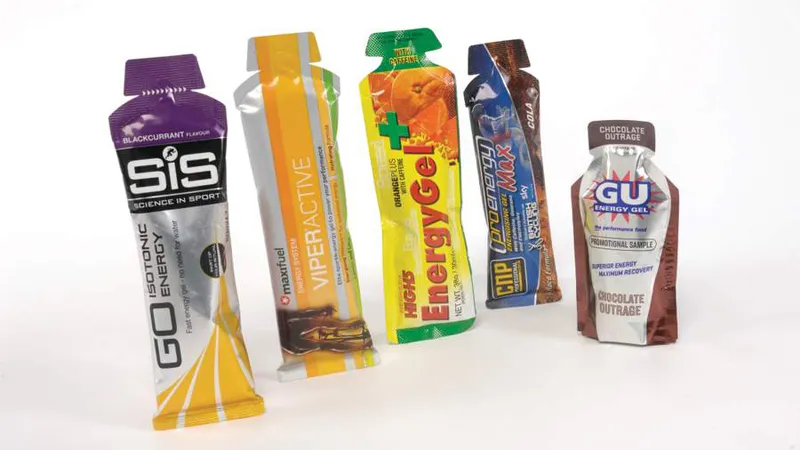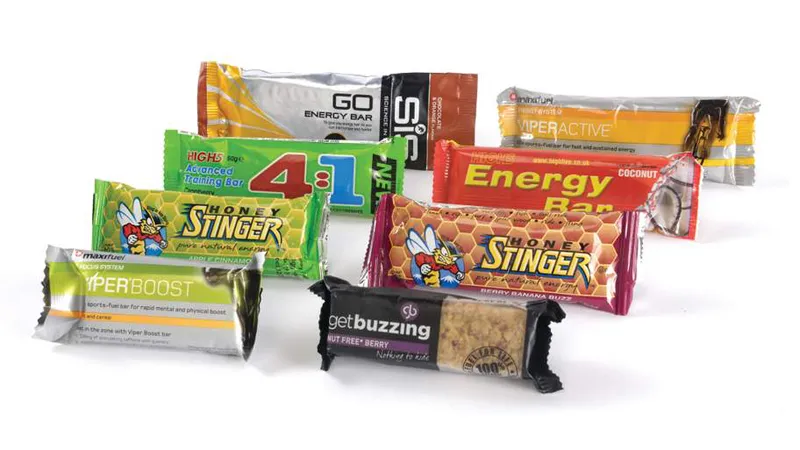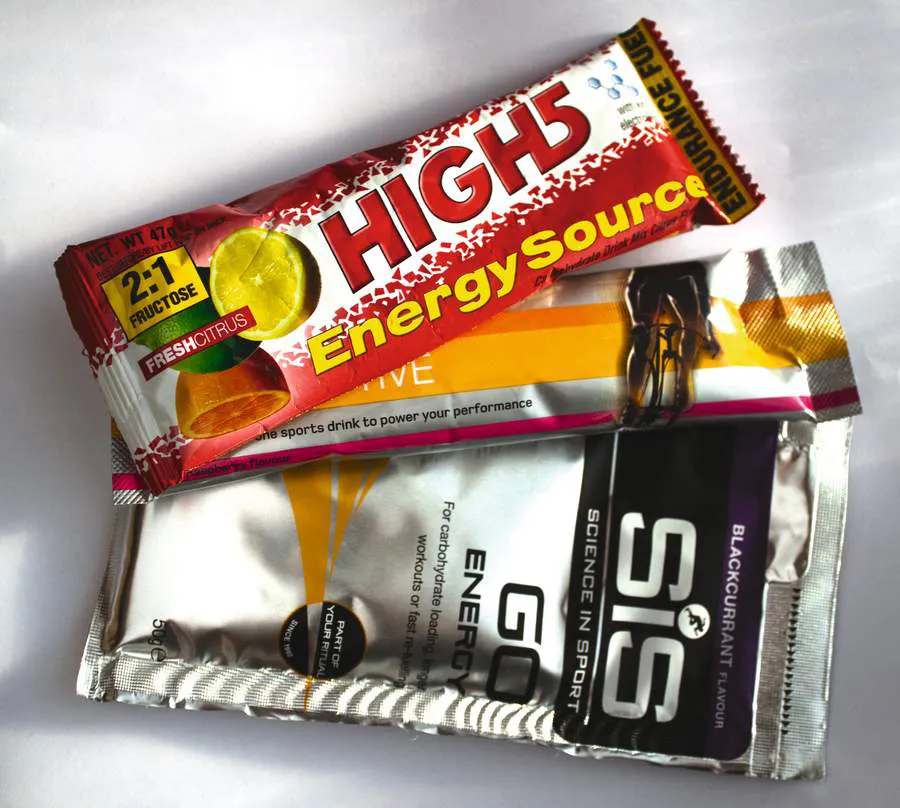When you walk into the local bike shop or pick up a magazine, there is plenty of choice when it comes to energy products for cycling. But what are they and do they provide any benefit to you as a cyclist?
Let’s start by looking at why you might need an energy product. Energy products are generally a mix of sugars (carbohydrates), salts (electrolytes) and water. The research has been quite clear over the last 30 years or so, in that taking on board both carbohydrate and water does improves performance by maintaining blood sugar during exercise and staving off dehydration. Some of them may contain other nutrients such as caffeine or protein, but these are more advanced drinks and may play a role in certain situations.
Energy products come in many forms. You can get a simple energy gel, an energy chew, an energy bar or energy drink. Let’s take a look each of these in turn.
Energy gels

An energy gel is essentially a concentrated form of sugars. They provide you with a concentrated hit of energy, which is generally simple to digest and absorb. They don’t take up a lot of room in your pocket and you can take quite a few with you on your rides. Generally you only use them during training or races, and the quick hit of energy they provide can really help your performance and prevent fatigue.
If you look on the back of the gel and find the ingredients list you should be looking for a combination of sugars. You want to have either maltodextrin or glucose with some fructose, which will maximise absorption of the gel.
- Advantages: Provide a concentrated hit of energy. Easy to fit in your pocket on a long ride
- Disadvantages: Can be quite sweet and sickly on long rides. A large range are available and it is best to find the ones you like the taste of
Energy chews

Energy chews are small bite sized chunks of sugar, a bit like a jelly baby. They are simple and easy to graze on during training, and allow you to spread your energy intake out a little more throughout a ride. They can be useful on harder group rides where you might not have too much time to take on board some energy while you are riding along at pace with the group.
You should try a few varieties out and see which is more practical but as long as they contain some sort of sugar they should work. You could even use a jelly baby instead, as they are cheaper and very similar in composition.
- Advantages: Simple to graze on during a ride
- Disadvantages: No real hydration advantage
Energy bars

An energy bar is a bit like a cereal bar or flapjack. However, they tend to be made of simpler sugars than a cereal bar so that they can be easily absorbed and digested. They provide another concentrated hit of energy, but this time with a bit more substance and when you are using them during a long ride they fill you up a little more than a gel.
You should take them during long rides when you want something that more resembles food then a sweet. They are quite often useful when the intensity is low as you have time to chew them and digest them.
In a similar way to the gels, you should look for a combination of simple sugars. If it is a training ride or lower intensity ride you might want to look for something which is oat or cereal based so that it is more substantial and takes away the hunger you can sometimes get on these type of rides. You can easily make your own energy bar by using a good flapjack or granola bar recipe.
- Advantages: Can satisfy hunger on long rides. Provide a nice variety of ways in which to take energy on board
- Disadvantages: Can cause stomach problems. Absorption may be slower, depending on the makeup of the bar
Energy drinks

An energy drink is one which contains simple carbohydrates within a drink. They provide you with not only those simple sugars you need during exercise to enhance performance, but water too, to enhance performance. They quite often provide you with electrolytes, which will help the body retain the fluid you are taking in during exercise.
You should take them during exercise to maximise performance, delay fatigue and stave off dehydration. Look to drink 500-750 ml per hour depending on the training session and how hot it is. The hotter and longer the session, the more you are going to need to drink.
You should look for that magic mix of sugars providing glucose or maltodextrin with some fructose. Not only will this maximise carbohydrate absorption, but it will also maximise fluid absorption too. Look for a drink which contains 6-8g of sugar per 100ml of fluid on the ingredients list. You can make your own energy drink by watering down fruit juice and adding a small pinch of table salt.
- Advantages: Provide a mix of fluid and carbohydrates so can not only provide energy but fluid too. Designed for optimal fluid absorption
- Disadvantages: To take on board enough energy can be filling and you generally need a large volume
